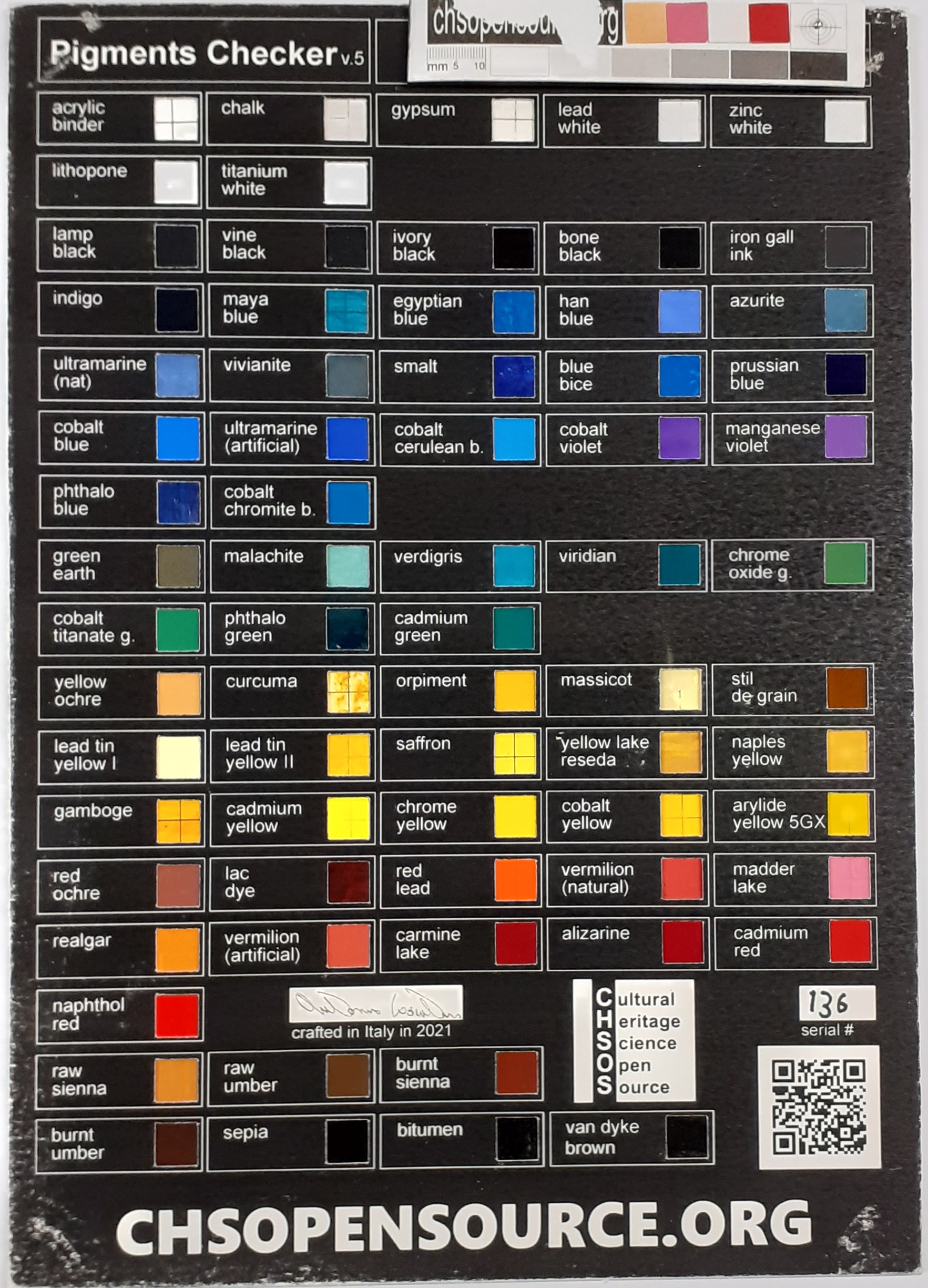
Colour photograph of the pigment checker chart
The graphic below illustrates the bandwidths of the three filters that are sold as the Filter Set to accompany and extend the possibilities of both the Apollo and Osiris cameras from Opus Instruments. We tested all three filters for their effectiveness at penetrating pigments at different wavelengths in the shortwave infrared region, with the results being summarised in the images below.
The infrared reflectograms were taken by Apollo using the settings F11 and a 40ms exposure time.
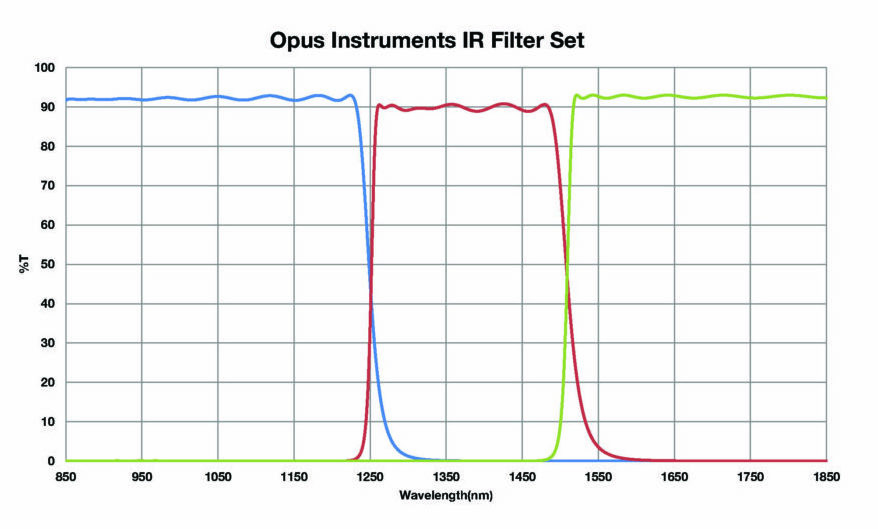
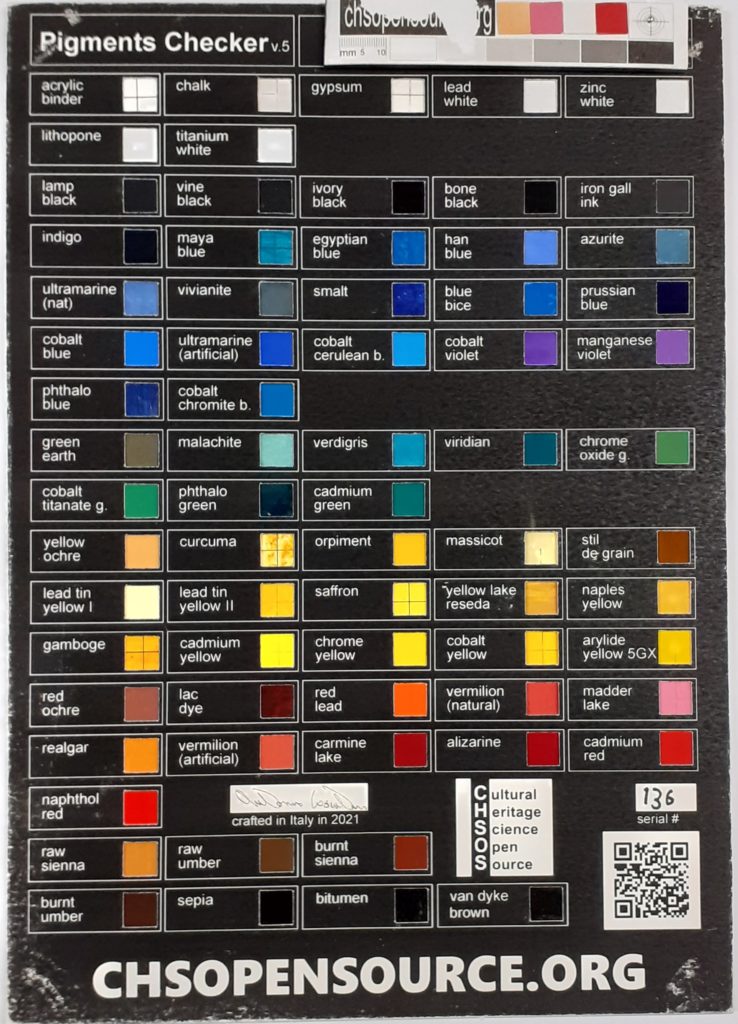
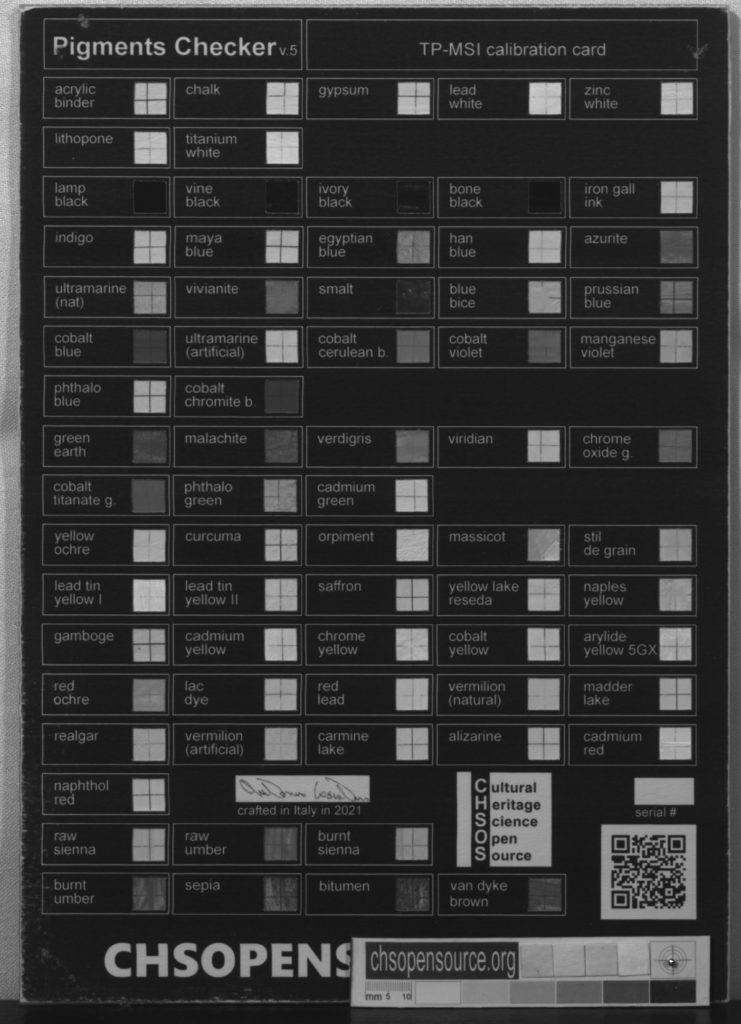
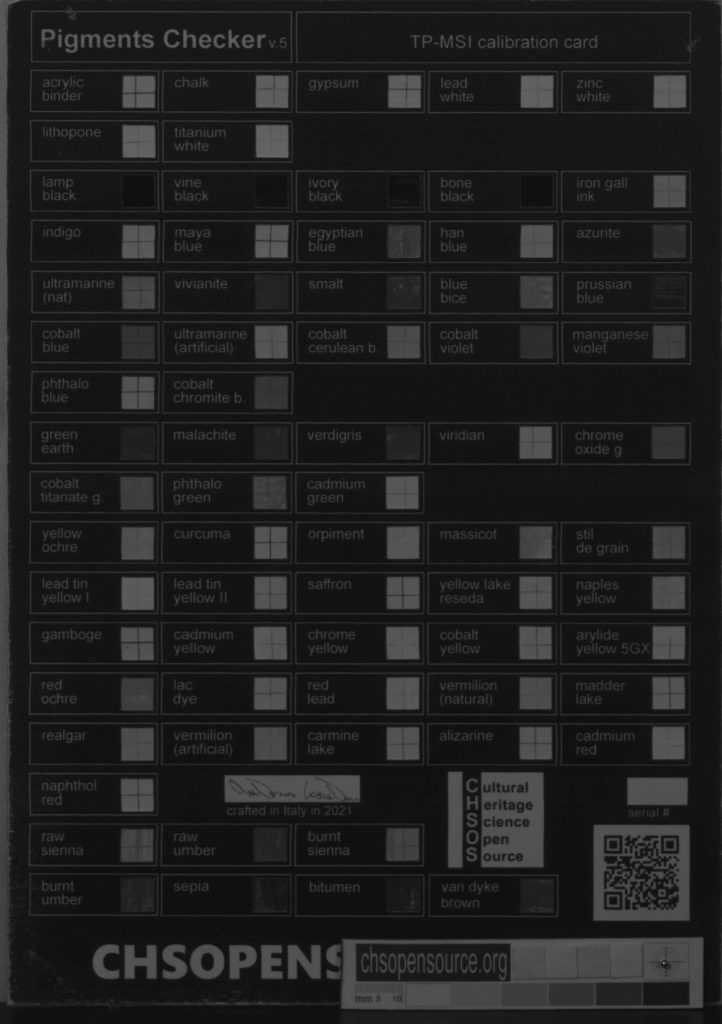
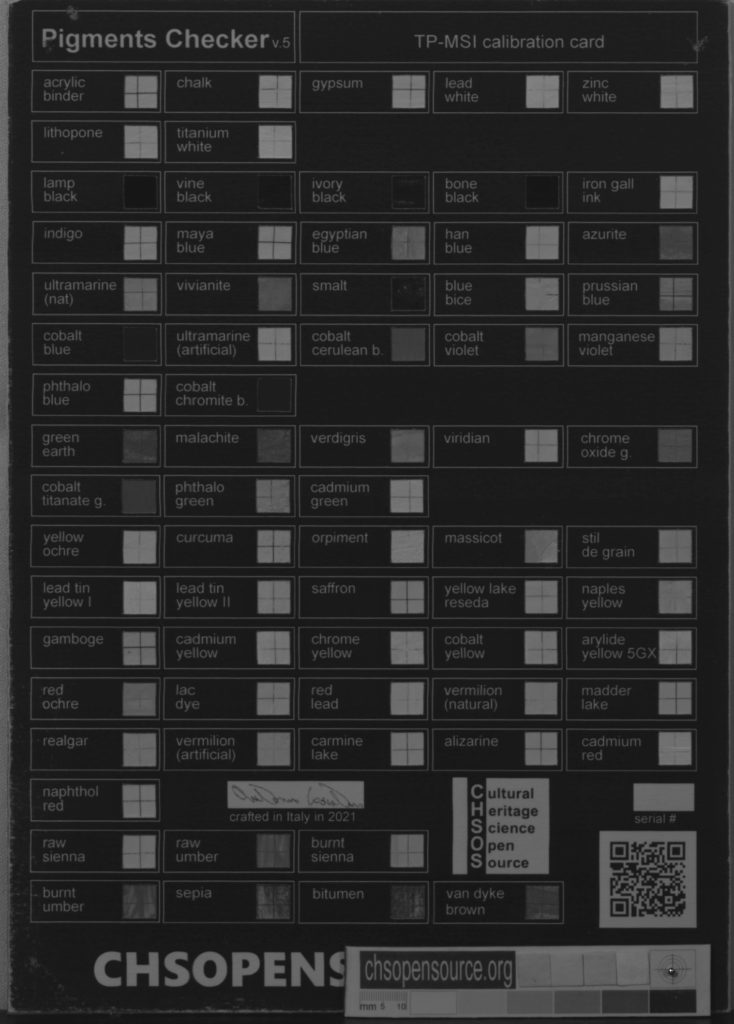
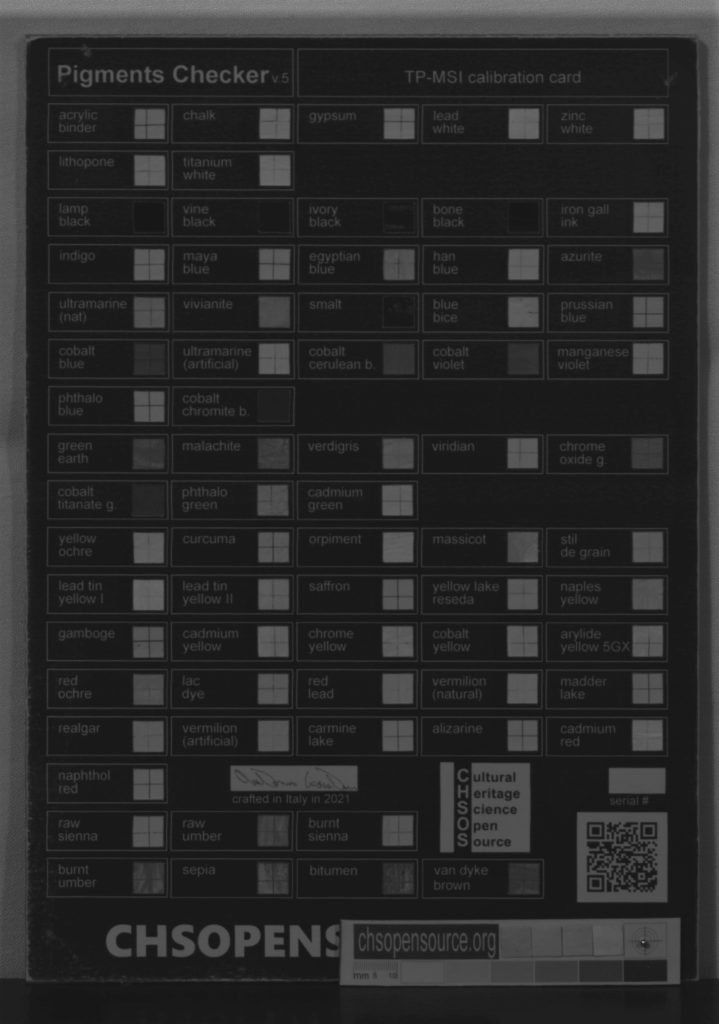

The false colour image above was created by combining all the scans into an RGB image, to interpret the scans more easily, with the long-wave being inserted in the R channel, the medium wave in the G channel etc. With thanks to Rik Klein Gotink fotografie for sending in this final image.
Key take away: The differences occur mostly on the blue pigments, and a few greens and browns.
If you would like to find out more about how the filter set can advance your infrared imaging work, please enquire at the bottom of this page. Thank you.
Images by kind permission of Cultural Heritage Open Source. The pigment checker specifications can be found here.